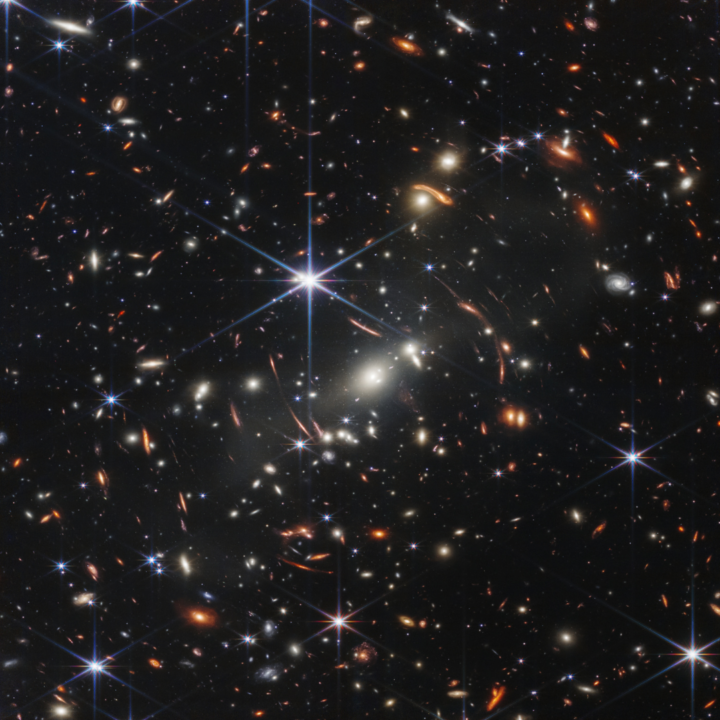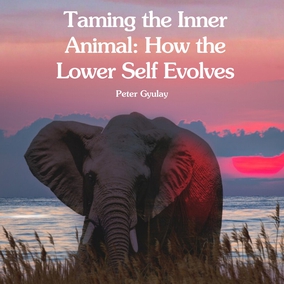The views expressed in our content reflect individual perspectives and do not represent the authoritative views of the Baha'i Faith.
Today, July 12th, we’ll have the awe-inspiring opportunity to see the first images of deep space from the James Webb Space Telescope (JWST) – allowing us to peer into our universe further than ever before.
People use the word “awesome” for even inconsequential things now, but these new photos will truly deserve that descriptor. Why? For the first time, we will be able to explore the origins of the known universe.
The breakthrough telescope capable of that feat – a joint effort of NASA, the Canadian Space Agency and the European Space Agency – has brought twenty nations together in the interest of delving into the mysteries of existence.
Now deployed and parked about a million miles from Earth, at what is called the Sun-Earth second Lagrange Point or L2, the $9 billion JWST instrument will be able to see, in the infrared spectrum, literally back toward the beginnings of time. Its mission: examining the formation of the earliest galaxies in the known universe.
What makes us so willing to expend the resources, the time, and the enormous effort required for such a mission? Simply, curiosity drives this scientific mission. Our insatiable curiosity about our origins defines what it is to be human – to possess a sense of curiosity, investigation, and wonder.
The Baha’i teachings confirm that each human being has a mind and a soul – and that we should use those powerful faculties together, in tandem, because science and religion agree. Our minds have reasoning power, scientific insight, the ability to ask penetrating questions and find the answers. Our souls supply the motivation, the curiosity, the wondering and searching, the striving desire to know where we came from and who we are.
RELATED: Is Our Universe Expanding? A Baha’i Look at Einstein’s Theory
Together, Abdu’l-Baha said in Some Answered Questions, our minds and souls work in tandem to make us fully human:
The human spirit, which distinguishes man from the animal, is the rational soul, and these two terms – the human spirit and the rational soul – designate one and the same thing. This spirit, which in the terminology of the philosophers is called the rational soul, encompasses all things and, as far as human capacity permits, discovers their realities and becomes aware of the properties and effects, the characteristics and conditions of earthly things. But the human spirit, unless it be assisted by the spirit of faith cannot become acquainted with the divine mysteries and the heavenly realities. It is like a mirror which, although clear, bright, and polished, is still in need of light. Not until a sunbeam falls upon it can it discover the divine mysteries.
As for the mind, it is the power of the human spirit. The spirit is as the lamp, and the mind as the light that shines from it. The spirit is as the tree, and the mind as the fruit. The mind is the perfection of the spirit and a necessary attribute thereof, even as the rays of the sun are the essential requirement of the sun itself.
Some people scoff at otherworldly undertakings like the JWST, but humanity needs this powerful new telescope so we can acquaint ourselves with those heavenly realities. Our scientific curiosity, coupled with our spiritual capacity for searching and finding new discoveries, may give us the answers to questions we’ve asked for millennia, and will undoubtedly prompt new questions, as well.
Why do we even care how or when the universe formed? We might as well ask: why do we yearn to know more than we knew yesterday? We want to know more because we have questing souls – because humans aren’t content to simply live their lives without discovering new frontiers and solving the mysteries that continually confront us.
Simply, we human beings have an innate inner desire to know.
That’s what the JWST will help us accomplish – it will allow humanity to know more about where we came from. It will answer some of the questions our souls have always asked. It’s just a powerful telescope, but its main scientific mission has four major goals:
- to search for light from the first stars and galaxies that ever formed,
- to study the formation and evolution of galaxies,
- to understand the formation of stars and planetary systems,
- and to study the origins of life.
Won’t gaining that new knowledge be incredibly awesome?
We are likely to learn, as the Baha’i writings began saying in the 19th century, that the number of galaxies in our vast universe goes far beyond the current scientific estimate of two trillion, and exceeds anything we could ever hope to even measure.
We may also discover that the universe has no edges and no limits.
RELATED: The Overview Effect: UN International Day of Human Space Flight
According to the Baha’i teachings, the universe is endless, its stars “without limit or number.” Abdu’l-Baha, in the provisional translation of his Tablet of the Universe, made this startling claim more than a century ago, when scientists still believed that the Milky Way was the only galaxy in the universe:
… thy Lord hath created in these vast heavens manifold bodies without limit or number, which the minds of men can neither compute nor encompass. Souls are bewildered when they attempt to understand them and confounded by a mere glimpse of them. … just as the luminous spiritual worlds are sanctified above computation or limitation, so too are the physical worlds in this vast immensity of space.
This suggests, out there at the limits of science and mysticism, that the vastness of the universe, “sanctified above computation or limitation,” ultimately reflects the “unknowable Essence” of God. Today, for the first time, when we gaze in awe at the James Webb Space Telescope’s new infrared photographs of the unbounded grandeur and magnificence the creation of our universe represents, perhaps it will remind us of its ineffable Creator.

















Comments
Sign in or create an account
Continue with Googleor